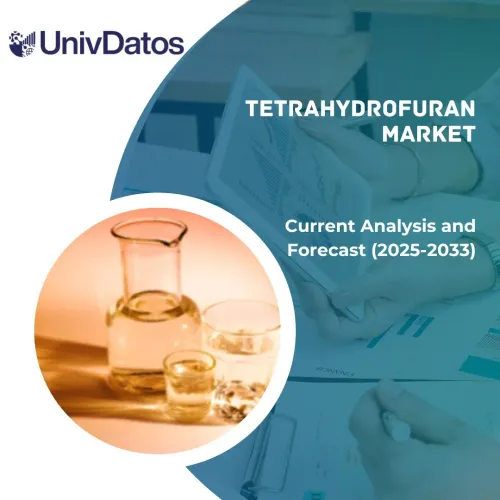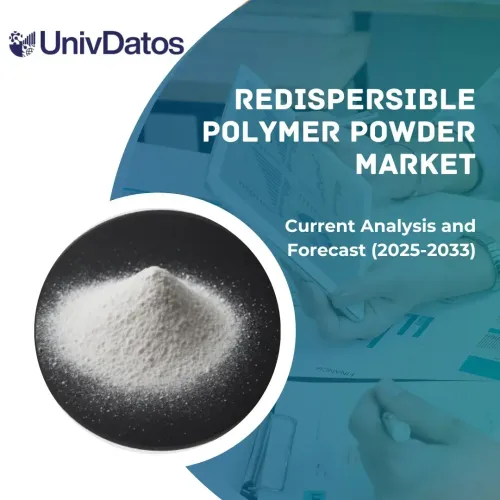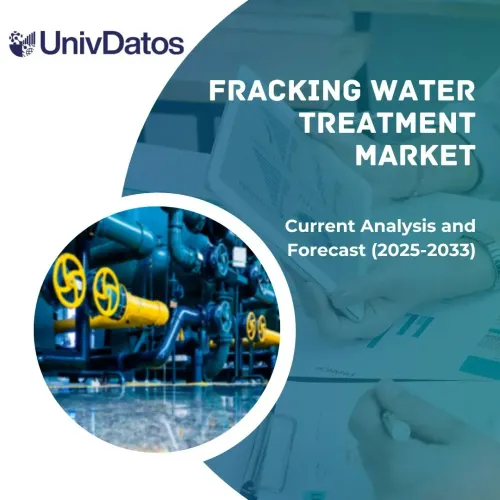- Startseite
- Über uns
- Industrie
- Dienstleistungen
- Lesen
- Kontaktieren Sie uns
Kraftstoffförderpumpenmarkt: Aktuelle Analyse und Prognose (2022-2028)
Schwerpunkt auf Produkt (AC-Kraftstoffförderpumpen, DC-Kraftstoffförderpumpen und Hand-Kraftstoffförderpumpen); Motor (12V DC, 24V DC, 115V DC, 230V DC und andere); Anwendung (Bauwesen, Transport, Landwirtschaft, Chemie, Bergbau, Lebensmittel und Getränke und andere); Montage (fest und tragbar); und Region/Land
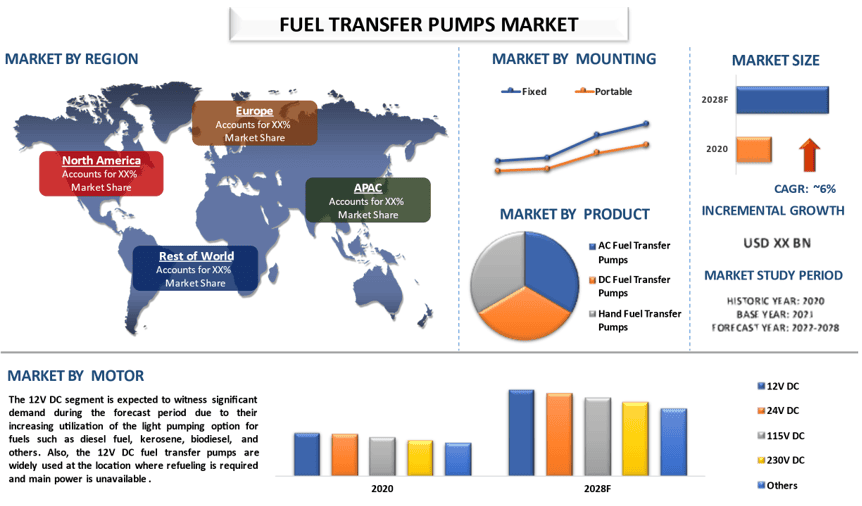
Es wird erwartet, dass der globale Markt für Kraftstoffförderpumpen im Prognosezeitraum mit einer beträchtlichen Rate von etwa 6 % wachsen wird. Kraftstoffförderpumpen sind dazu bestimmt, verschiedene Arten von flüssigen Brennstoffen durch ein Netzwerk von Rohren, Leitungen und Schläuchen von einer Einheit zur anderen zu transportieren. Sie eignen sich ideal für den Transport von Flüssigkeiten wie Benzin, Diesel, Motoröl und Kerosin von Lagerfässern oder -tanks zu Fahrzeugen, Baumaschinen, Flugzeugen und anderen Mobilitätsfahrzeugen/-maschinen. Darüber hinaus werden Kraftstoffförderpumpen häufig verwendet, um Kraftstoff unter hohem Druck zu verteilen. Aufgrund der raschen Industrialisierung und des Baubooms sowie der steigenden Nachfrage aus verschiedenen Sektoren, darunter Wasser- und Abwasseraufbereitung, Bergbau, Landwirtschaft, Luft- und Raumfahrt und Chemie, sind Kraftstoffförderpumpen in letzter Zeit stark nachgefragt.
Graco Inc, Tuthill Transfer System, Great Plains Industries Inc., INTRADIN, Johnson Electric, Delphi Automotive Plc., Continental Ag, Denso Corporation, Mach Power Point Pumps India Pvt. Ltd. und Magna International Inc. sind einige der Hauptakteure auf dem Markt. Mehrere Fusionen und Übernahmen sowie Partnerschaften wurden von diesen Akteuren eingegangen, um Kunden mit Hightech- und innovativen Produkten/Technologien zu unterstützen.
Im Bericht vorgestellte Erkenntnisse
„Von den Motoren wird erwartet, dass die Kategorie 12V DC im Prognosezeitraum ein signifikantes Marktwachstum verzeichnen wird“
Basierend auf dem Motor ist der Markt in 12V DC, 24V DC, 115V DC, 230V DC und andere unterteilt. Aufgrund der steigenden Verwendung der leichten Pumpoption für Kraftstoffe wie Diesel, Kerosin, Biodiesel und andere wird erwartet, dass das Segment 12 V DC im Projektionszeitraum eine erhebliche Nachfrage verzeichnen wird. Darüber hinaus ist der 12-V-DC-Bereich leicht, tragbar und für den Einsatz in abgelegenen Gebieten sowie für die mobile Betankung geeignet und wird voraussichtlich das Marktwachstum in der kommenden Zeit unterstützen. Auch die schnellere Reaktionszeit zum Starten, Stoppen und Beschleunigen sowie die längere Lebensdauer, das leckagefreie Design und die schnelle Installation zusammen mit der hohen Anlaufleistung und dem hohen Drehmoment bieten dem 12-VDC-Segment zusätzliche Vorteile und werden voraussichtlich die Nachfrage ankurbeln.
„Unter den Anwendungen wird das Transportsegment im Jahr 2020 eine signifikante CAGR auf dem Markt halten“
Basierend auf der Anwendung ist der Markt in Bauwesen, Transport, Landwirtschaft, Chemie, Bergbau, Lebensmittel und Getränke sowie andere unterteilt. Es wird erwartet, dass das Transportsegment im Prognosezeitraum eine signifikante CAGR verzeichnen wird, was auf die diversifizierten Transportmittel wie See-, Luft-, Straßen- und Schienentransport in Verbindung mit der steigenden Nachfrage nach kraftstoffbasierten Fahrzeugen zurückzuführen ist. Darüber hinaus wird erwartet, dass die steigende Nachfrage nach verschiedenen Arten von flüssigen Brennstoffen wie Kerosin, HSD, Benzin und Schmieröl unter anderem aus der Automobilindustrie die Nachfrage im Prognosezeitraum ankurbeln wird.
„Der asiatisch-pazifische Raum wird einen bedeutenden Anteil am Markt halten“
Im Jahr 2020 hielt der asiatisch-pazifische Raum einen bedeutenden Anteil am globalen Markt für Kraftstoffförderpumpen. Dies ist hauptsächlich auf die rasche Industrialisierung und die wachsende Automobilindustrie in Verbindung mit dem Fortschritt in der Fertigungsindustrie zurückzuführen. Auch die steigende Nachfrage nach Chemikalien und die Expansion in der chemischen Industrie sowie der technologische Fortschritt werden voraussichtlich das Marktwachstum unterstützen. Darüber hinaus werden die Ausweitung von Entwicklungsprojekten, das steigende verfügbare Einkommen und die zunehmenden Investitionen auf dem Kontinent voraussichtlich die Marktexpansion ankurbeln. Darüber hinaus werden die Einführung neuer Produkte, die Zunahme von Forschungs- und Entwicklungsaktivitäten sowie die Zusammenarbeit und Fusionen und Übernahmen zwischen den führenden Akteuren das Wachstum im Prognosezeitraum vorantreiben. Beispielsweise bietet Shanghai SUOTO Pump Industrial Co., Ltd. eine breite Palette von Kraftstoffförderpumpen für eine Vielzahl von Anwendungen an, darunter elektrische Ölpumpen KCB 2CY, Zahnradölpumpen KCB, Trommelölpumpen SB und Heißölpumpen LQRY.
Gründe für den Kauf dieses Berichts:
- Die Studie umfasst Marktgrößen- und Prognoseanalysen, die von authentifizierten wichtigen Branchenexperten validiert wurden.
- Der Bericht bietet einen schnellen Überblick über die Gesamtleistung der Branche auf einen Blick.
- Der Bericht enthält eine detaillierte Analyse der wichtigsten Branchenkollegen mit einem primären Fokus auf wichtige Unternehmenskennzahlen, Produktportfolio, Expansionsstrategien und aktuelle Entwicklungen.
- Detaillierte Untersuchung von Treibern, Beschränkungen, wichtigen Trends und Chancen in der Branche.
- Die Studie deckt den Markt umfassend über verschiedene Segmente hinweg ab.
- Tiefgreifende regionale Analyse der Branche.
Anpassungsoptionen:
Der globale Markt für Kraftstoffförderpumpen kann je nach Bedarf oder einem anderen Marktsegment weiter angepasst werden. Darüber hinaus versteht UMI, dass Sie möglicherweise Ihre eigenen geschäftlichen Anforderungen haben. Nehmen Sie daher Kontakt mit uns auf, um einen Bericht zu erhalten, der Ihren Anforderungen vollständig entspricht.
Inhaltsverzeichnis
Forschungsmethodik für die Marktanalyse von Kraftstoffförderpumpen (2022-2028)
Die Analyse des historischen Marktes, die Schätzung des aktuellen Marktes und die Prognose des zukünftigen Marktes des globalen Marktes für Kraftstoffförderpumpen waren die drei wichtigsten Schritte, die unternommen wurden, um die Akzeptanz von Kraftstoffförderpumpen in den wichtigsten Regionen weltweit zu schaffen und zu analysieren. Es wurden umfassende Sekundärrecherchen durchgeführt, um die historischen Marktzahlen zu sammeln und die aktuelle Marktgröße zu schätzen. Zweitens wurden zahlreiche Erkenntnisse und Annahmen berücksichtigt, um diese Erkenntnisse zu validieren. Darüber hinaus wurden ausführliche Primärinterviews mit Branchenexperten entlang der Wertschöpfungskette des globalen Marktes für Kraftstoffförderpumpen geführt. Nach der Annahme und Validierung der Marktzahlen durch Primärinterviews verwendeten wir einen Top-Down-/Bottom-Up-Ansatz, um die gesamte Marktgröße zu prognostizieren. Danach wurden Marktaufschlüsselungs- und Datentriangulationsmethoden angewendet, um die Marktgröße von Segmenten und Untersegmenten der Branche zu schätzen und zu analysieren. Die detaillierte Methodik wird im Folgenden erläutert:
Analyse der historischen Marktgröße
Schritt 1: Eingehende Untersuchung von Sekundärquellen:
Es wurde eine detaillierte Sekundärstudie durchgeführt, um die historische Marktgröße des Marktes für Kraftstoffförderpumpen über unternehmensinterne Quellen wie Jahresberichte & Finanzberichte, Performance-Präsentationen, Pressemitteilungen usw. und externe Quellen wie Fachzeitschriften, Nachrichten & Artikel, Regierungsveröffentlichungen, Wettbewerberveröffentlichungen, Branchenberichte, Datenbanken von Drittanbietern und andere glaubwürdige Veröffentlichungen zu erhalten.
Schritt 2: Marktsegmentierung:
Nachdem wir die historische Marktgröße des Marktes für Kraftstoffförderpumpen erhalten hatten, führten wir eine detaillierte Sekundäranalyse durch, um historische Markteinblicke und Anteile für verschiedene Segmente & Untersegmente für wichtige Regionen zu sammeln. Wichtige Segmente sind im Bericht als Produkt, Motor, Montage und Anwendung enthalten. Darüber hinaus wurden Länderanalysen durchgeführt, um die allgemeine Akzeptanz von Testmodellen in dieser Region zu bewerten.
Schritt 3: Faktorenanalyse:
Nachdem wir die historische Marktgröße verschiedener Segmente und Untersegmente ermittelt hatten, führten wir eine detaillierte Faktorenanalyse durch, um die aktuelle Marktgröße des Marktes für Kraftstoffförderpumpen zu schätzen. Darüber hinaus führten wir eine Faktorenanalyse unter Verwendung abhängiger und unabhängiger Variablen wie Produkt, Motor, Montage und Anwendungen von Kraftstoffförderpumpen durch. Es wurde eine gründliche Analyse für Nachfrage- und Angebotsseitenszenarien unter Berücksichtigung von Top-Partnerschaften, Fusionen und Übernahmen, Geschäftsausweitungen und Produkteinführungen im Bereich des Marktes für Kraftstoffförderpumpen auf der ganzen Welt durchgeführt.
Aktuelle Marktzgrößenschätzung & Prognose
Aktuelle Marktgrößenbestimmung: Basierend auf umsetzbaren Erkenntnissen aus den oben genannten 3 Schritten ermittelten wir die aktuelle Marktgröße, die wichtigsten Akteure auf dem globalen Markt für Kraftstoffförderpumpen und die Marktanteile der Segmente. Alle erforderlichen prozentualen Anteile und Marktaufschlüsselungen wurden unter Verwendung des oben genannten Sekundäransatzes ermittelt und durch Primärinterviews verifiziert.
Schätzung & Prognose: Für die Marktschätzung und -prognose wurden verschiedenen Faktoren Gewichte zugewiesen, darunter Treiber & Trends, Einschränkungen und Chancen für die Stakeholder. Nach der Analyse dieser Faktoren wurden relevante Prognosetechniken, d. h. der Top-Down-/Bottom-Up-Ansatz, angewendet, um die Marktprognose für 2028 für verschiedene Segmente und Untersegmente in den wichtigsten Märkten weltweit zu erstellen. Die Forschungsmethodik, die zur Schätzung der Marktgröße angewendet wird, umfasst:
- Die Marktgröße der Branche in Bezug auf Umsatz (USD) und die Akzeptanzrate des Marktes für Kraftstoffförderpumpen in den wichtigsten Märkten im Inland
- Alle prozentualen Anteile, Aufteilungen und Aufschlüsselungen von Marktsegmenten und Untersegmenten
- Wichtige Akteure auf dem globalen Markt für Kraftstoffförderpumpen in Bezug auf die angebotenen Produkte. Auch die Wachstumsstrategien, die von diesen Akteuren angewendet werden, um in dem schnell wachsenden Markt zu konkurrieren
Validierung von Marktgröße und -anteil
Primärforschung: Es wurden ausführliche Interviews mit den wichtigsten Meinungsführern (Key Opinion Leaders, KOLs) geführt, darunter Top-Level-Führungskräfte (CXO/VPs, Vertriebsleiter, Marketingleiter, Betriebsleiter, Regionalleiter, Country Manager usw.) in den wichtigsten Regionen. Die Ergebnisse der Primärforschung wurden dann zusammengefasst und eine statistische Analyse durchgeführt, um die aufgestellte Hypothese zu beweisen. Die Erkenntnisse aus der Primärforschung wurden mit den Erkenntnissen aus der Sekundärforschung zusammengeführt, wodurch Informationen in umsetzbare Erkenntnisse umgewandelt wurden.
Aufteilung der primären Teilnehmer in verschiedenen Regionen
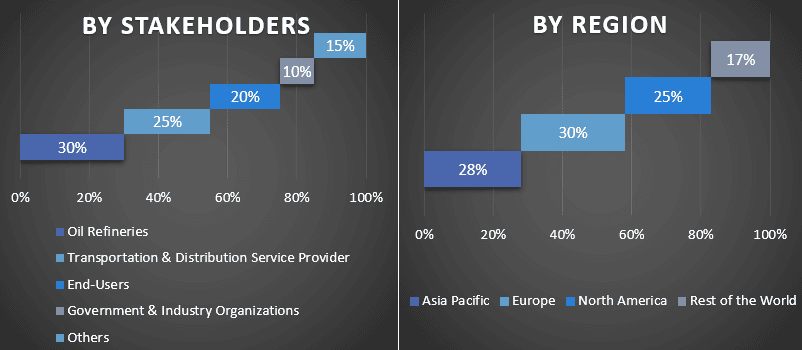
Markt Engineering
Die Datentriangulationstechnik wurde angewendet, um die gesamte Marktschätzung abzuschließen und präzise statistische Zahlen für jedes Segment und Untersegment des globalen Marktes für Kraftstoffförderpumpen zu erhalten. Die Daten wurden in mehrere Segmente und Untersegmente aufgeteilt, nachdem verschiedene Parameter und Trends in den Bereichen Produkt, Motor, Montage und Anwendung auf dem globalen Markt für Kraftstoffförderpumpen untersucht wurden.
Das Hauptziel der Global Fuel Transfer Pumps Market Study
Die aktuellen & zukünftigen Markttrends des globalen Marktes für Kraftstoffförderpumpen wurden in der Studie genau bestimmt. Investoren können strategische Einblicke gewinnen, um ihre Entscheidungen für Investitionen auf der Grundlage der in der Studie durchgeführten qualitativen und quantitativen Analyse zu treffen. Aktuelle und zukünftige Markttrends bestimmten die allgemeine Attraktivität des Marktes auf regionaler Ebene und bieten den Industrieteilnehmern eine Plattform, um den unerschlossenen Markt zu nutzen und von einem First-Mover-Vorteil zu profitieren. Weitere quantitative Ziele der Studien sind:
- Analyse der aktuellen und prognostizierten Marktgröße des Marktes für Kraftstoffförderpumpen in Bezug auf den Wert (USD). Analysieren Sie auch die aktuelle und prognostizierte Marktgröße verschiedener Segmente und Untersegmente
- Die Segmente der Studie umfassen die Bereiche Produkt, Motor, Montage und Anwendung.
- Definition und Analyse des regulatorischen Rahmens für die Kraftstoffförderpumpen
- Analysieren Sie die Wertschöpfungskette, die mit der Präsenz verschiedener Vermittler verbunden ist, sowie die Analyse des Kunden- und Wettbewerberverhaltens der Branche.
- Analyse der aktuellen und prognostizierten Marktgröße des Marktes für Kraftstoffförderpumpen für die Hauptregion.
- Zu den wichtigsten Ländern der in dem Bericht untersuchten Regionen gehören der asiatisch-pazifische Raum, Europa, Nordamerika und der Rest der Welt.
- Unternehmensprofile des Marktes für Kraftstoffförderpumpen und die Wachstumsstrategien, die von den Marktakteuren angewendet werden, um in dem schnell wachsenden Markt zu bestehen
- Tiefgehende regionale Analyse der Branche
Verwandt Berichte
Kunden, die diesen Artikel gekauft haben, kauften auch

